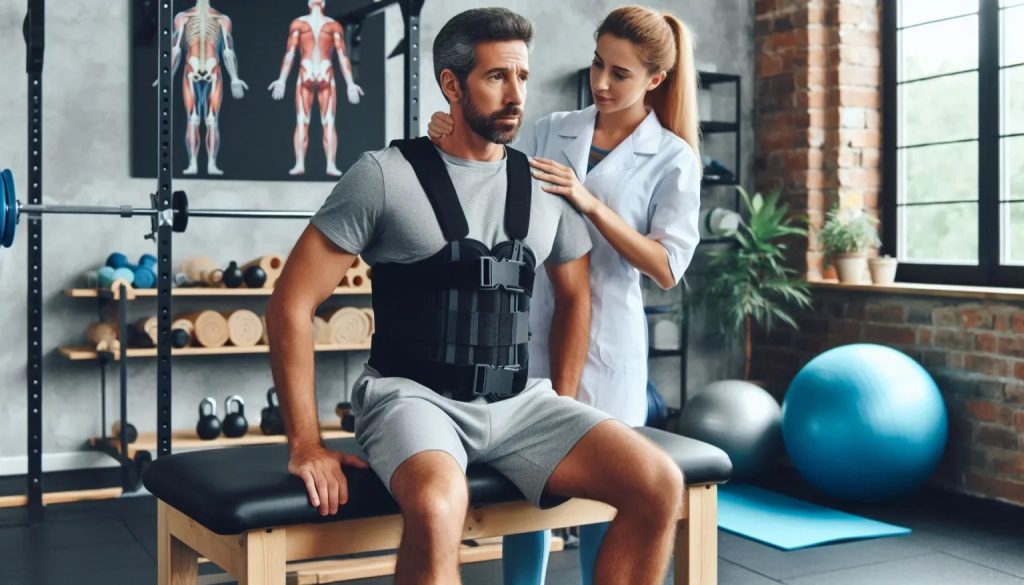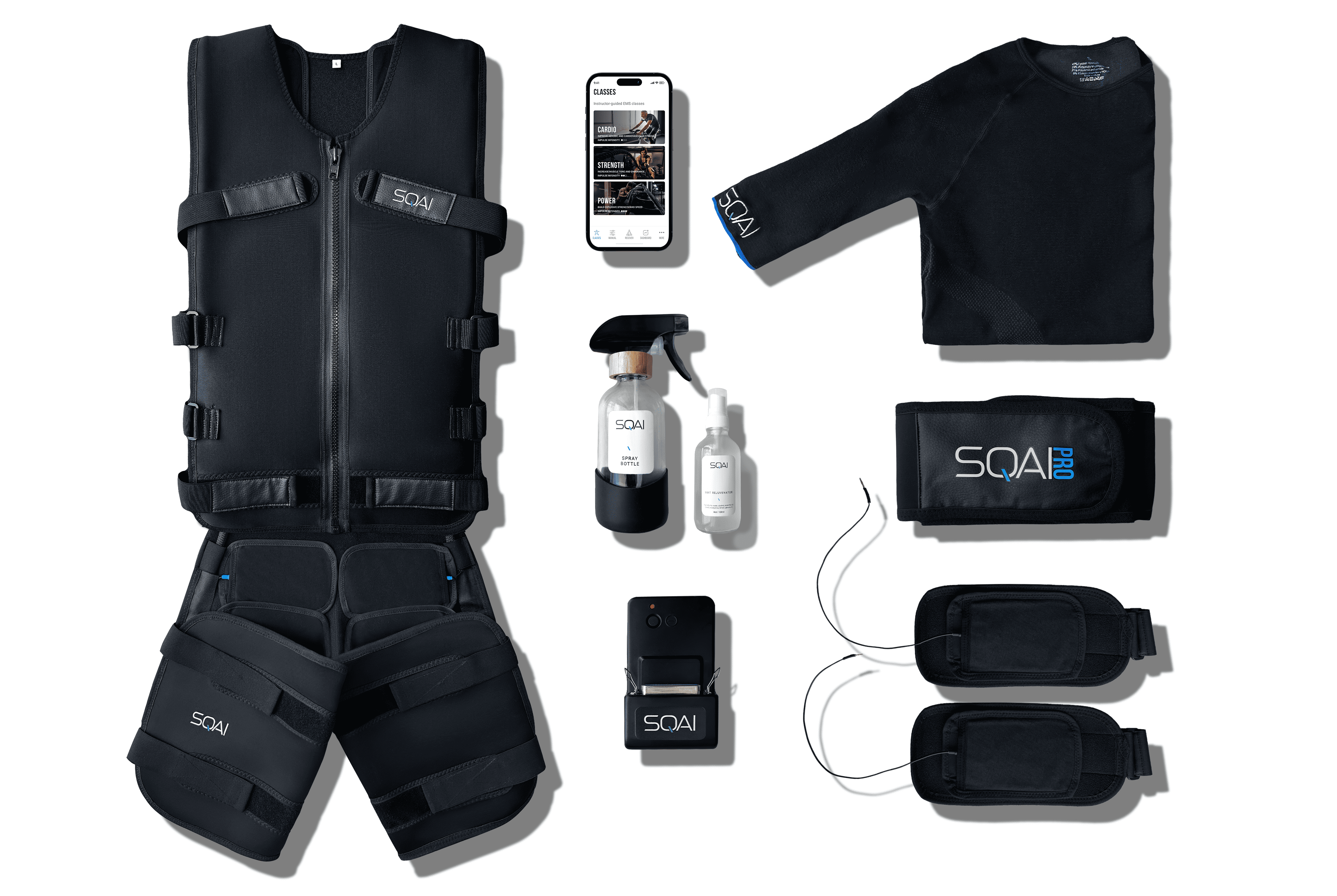Electro Muscle Stimulation (EMS) has transformed dramatically over the decades, evolving from a niche medical therapy into a mainstream fitness solution. Initially developed for rehabilitation and injury recovery, EMS is now widely used in sports performance, weight loss, muscle building, and even anti-aging treatments. This article explores the journey of EMS, its expanding applications, and the technology that continues to drive its popularity in the fitness industry.
The Origins of EMS in Medical Therapy
EMS has its roots in medical science, with early research dating back to the 18th century when Italian scientist Luigi Galvani discovered bioelectricity. Galvani’s experiments with frog legs demonstrated that electrical impulses could cause muscle contractions, laying the foundation for future applications of electrical stimulation in medicine. However, it wasn't until the 1960s and 1970s that EMS was systematically studied and applied in the medical field.
During this period, Soviet scientists began using EMS to enhance muscle strength and recovery in athletes, while Western medical professionals explored its potential in rehabilitation. Research revealed that EMS could effectively activate muscle fibers even when a patient was unable to perform voluntary movement. This breakthrough led to its integration into physical therapy and post-operative care, where it became an essential tool for restoring muscle function and preventing atrophy.
Physiotherapists began using EMS to treat patients with muscle atrophy, paralysis, and post-surgical recovery. By sending electrical impulses to inactive muscles, EMS helped prevent degeneration, improve circulation, and promote healing. This method proved especially useful for individuals recovering from strokes, spinal cord injuries, and neurological disorders like multiple sclerosis. Over time, medical experts refined EMS protocols to enhance its effectiveness, developing specialized programs for various conditions.
For patients who were bedridden or had limited mobility, EMS provided a way to maintain muscle tone and strength without engaging in traditional exercise. Studies found that consistent EMS therapy could slow down muscle deterioration, stimulate blood flow, and even improve nerve regeneration. This made it particularly valuable for individuals who faced long recovery periods or had conditions that impaired voluntary muscle control.

How EMS Works in Rehabilitation
EMS works by mimicking the natural electrical signals that trigger muscle contraction. The human body relies on electrical impulses sent from the brain through the nervous system to initiate movement. When a person suffers an injury, nerve damage or muscular atrophy can disrupt this process, making it difficult to engage certain muscle groups properly. EMS bypasses the nervous system and directly stimulates the muscles, helping to restore strength and function even when voluntary movement is limited.
Medical professionals use EMS in various rehabilitation programs, including:
Post-surgical recovery:
EMS plays a crucial role in rehabilitation after surgeries, such as knee replacements, rotator cuff repairs, and spinal procedures. It helps reduce muscle loss, improve circulation, and accelerate healing, allowing patients to regain mobility faster.
Chronic pain management:
EMS is widely used to treat conditions like fibromyalgia, arthritis, and lower back pain. The electrical impulses help block pain signals, relax muscles, and reduce inflammation, providing a drug-free alternative to pain management.
Neuromuscular disorders
Patients with conditions such as multiple sclerosis, cerebral palsy, and Parkinson’s disease benefit from EMS therapy. It aids in maintaining muscle function, improving motor control, and reducing muscle stiffness or spasms.
Stroke and spinal cord injury rehabilitation
EMS is an essential tool in neurological rehabilitation programs, helping patients rebuild muscle strength and coordination after a stroke or spinal cord injury. Studies show that targeted EMS therapy can improve motor function and even assist in nerve re-education.
Circulation improvement and edema reduction
EMS enhances blood flow and lymphatic drainage, reducing swelling and promoting faster healing in individuals recovering from injuries or suffering from conditions like lymphedema.
By integrating EMS into rehabilitation protocols, medical professionals can provide patients with a safe, non-invasive, and effective method to rebuild strength, regain mobility, and manage pain. As technology continues to advance, EMS devices are becoming more sophisticated, offering personalized therapy programs and enhanced results.

EMS in Sports Science: Enhancing Athletic Performance
By the 1980s and 1990s, EMS had moved beyond medical therapy and entered the world of professional sports. Olympic athletes and elite sports teams began integrating EMS into their training regimens to maximize muscle activation, strength gains, and recovery speed. Initially, Soviet sports scientists experimented with EMS to enhance the performance of weightlifters and track athletes, and their success quickly caught the attention of trainers worldwide.
Research demonstrated that EMS could activate muscle fibers more efficiently than voluntary contractions alone. This made it an attractive option for athletes looking to gain a competitive edge. Studies showed that incorporating EMS into training programs could improve muscle endurance, explosive strength, and neuromuscular coordination. By the late 1990s, EMS had become a standard tool in high-performance training, used by sprinters, football players, swimmers, and even combat sports athletes.
One of the key reasons EMS gained traction in the sports world was its ability to target deep muscle fibers that are difficult to engage with traditional exercise. Conventional weight training primarily activates larger, more superficial muscle groups, but EMS can stimulate both slow-twitch and fast-twitch muscle fibers, leading to improved overall muscle function.
Key Benefits of EMS for Athletes
EMS is now widely recognized as a game-changing tool for professional and amateur athletes alike. It offers a range of benefits that enhance performance, reduce recovery time, and minimize the risk of injury.
Increased muscle fiber recruitment:
EMS activates deep muscle fibers that often remain underutilized during conventional workouts. By stimulating a broader range of muscle groups, athletes can achieve greater muscle activation and efficiency in their movements.
Enhanced strength and endurance:
Short, high-intensity EMS sessions can improve both muscle power and stamina. Because EMS stimulates fast-twitch muscle fibers, it is particularly effective for athletes who rely on explosive movements, such as sprinters, jumpers, and weightlifters.
Faster recovery:
EMS promotes blood flow, flushes out lactic acid, and reduces muscle soreness and fatigue. Many elite athletes use EMS post-workout to accelerate muscle recovery and prepare for the next training session.
Injury prevention:
By strengthening stabilizing muscles and improving neuromuscular coordination, EMS helps reduce the risk of muscle imbalances and strains. This is particularly beneficial for high-impact sports like football, basketball, and tennis, where injury prevention is crucial.
Improved neuromuscular efficiency:
EMS enhances the communication between muscles and the nervous system, leading to more precise, efficient movement patterns that can improve agility, balance, and overall performance.
Top athletes, including Olympic sprinters, professional football players, and elite weightlifters, integrate EMS into their strength training programs to increase muscle activation, improve endurance, and enhance overall performance. Sports scientists continue to study its effects, and as EMS technology advances, its role in athletic training is expected to grow even further.
The Rise of EMS in Fitness and Weight Loss
As EMS technology became more accessible and affordable, it expanded beyond elite sports and medical therapy into the commercial fitness industry. By the early 2000s, EMS began gaining traction as a highly efficient workout method, promising significant fitness benefits in a fraction of the time required by traditional training. Today, EMS is widely marketed as a solution for individuals looking to build muscle, lose weight, and improve overall fitness with minimal time investment.
One of the biggest selling points of EMS fitness training is its ability to deliver the benefits of a traditional 90-minute gym session in just 20 minutes. The efficiency of EMS workouts has made them particularly appealing to busy professionals, parents, and individuals who struggle to fit long workouts into their schedules. With EMS, users can achieve full-body muscle engagement in a short, structured session, maximizing their results without spending hours in the gym.
The popularity of EMS has surged worldwide, leading to the emergence of specialized EMS fitness studios in cities across Europe, the U.S., and Asia. These studios cater to individuals looking for effective, science-backed fitness solutions that fit into modern fast-paced lifestyles. As awareness of EMS continues to grow, more people are incorporating it into their fitness routines to enhance strength, endurance, weight loss, and overall body toning.

How EMS is Used in Fitness Training
EMS training has transformed the fitness landscape by offering a revolutionary way to activate muscles and optimize workouts. Unlike traditional exercise, which requires voluntary contractions to stimulate muscles, EMS directly engages both superficial and deep muscle fibers, making workouts more effective and efficient.
Full-body workouts: EMS suits and wireless electrode systems allow users to engage multiple muscle groups simultaneously. A single session can activate 90% of muscle fibers, compared to just 30-50% in conventional workouts, leading to faster strength gains and muscle toning.
High-intensity training with low impact:
EMS provides the benefits of high-intensity strength training without putting excessive strain on the joints. This makes it an ideal option for individuals recovering from injuries, those with joint pain, and older adults looking for a safe way to stay active.
Weight loss and body sculpting:
Because EMS activates more muscle fibers and increases energy expenditure, it leads to a higher calorie burn during and after workouts. This makes it an effective tool for fat loss, muscle definition, and improving overall body composition. Some studies suggest that EMS can boost metabolism and enhance post-workout calorie burn, making it a valuable addition to weight loss programs.
Core strengthening and posture improvement:
Many people struggle with poor posture due to weak core muscles. EMS targets deep core stabilizers, helping to improve posture, reduce back pain, and enhance overall body alignment.
Fitness centers specializing in EMS training have gained massive popularity, particularly in Europe and Asia, where boutique EMS studios offer personalized training programs tailored to individual fitness goals. Many users report that they experience faster results, increased muscle tone, and reduced body fat within just a few weeks of regular EMS sessions.
As wireless EMS suits and home EMS devices become more advanced, the technology is expected to continue evolving, making EMS workouts even more accessible to the general population. Whether used as a standalone workout method or integrated into traditional fitness routines, EMS is proving to be a game-changer in the world of fitness and weight loss.

EMS for Muscle Recovery and Pain Relief
Beyond enhancing athletic performance and fitness, EMS has proven to be a powerful tool for muscle recovery and injury prevention. Many professional athletes, physiotherapists, and sports recovery specialists incorporate EMS into post-exercise recovery routines to speed up muscle healing, reduce soreness, and improve flexibility.
One of the main benefits of EMS in recovery is its ability to stimulate circulation and promote faster muscle regeneration. After intense workouts or competitions, muscles experience micro-tears and inflammation, leading to delayed onset muscle soreness (DOMS). EMS helps to alleviate these effects by enhancing blood flow, reducing stiffness, and relaxing fatigued muscles.
Athletes in high-intensity sports like football, cycling, weightlifting, and marathon running frequently use EMS as part of their recovery protocols to maintain peak performance and minimize downtime between training sessions. However, EMS isn't just for elite athletes, weekend warriors, fitness enthusiasts, and individuals recovering from injuries can all benefit from incorporating EMS into their recovery routines.
How EMS Aids in Recovery
EMS works by delivering low-frequency electrical impulses to stimulate muscle contractions, mimicking the body's natural recovery processes. These gentle contractions help with:
Reducing muscle soreness (DOMS):
EMS enhances circulation and lymphatic drainage, helping to flush out lactic acid and metabolic waste that accumulate after intense workouts. This reduces muscle stiffness and post-exercise discomfort.
Accelerating healing:
By increasing blood flow to targeted areas, EMS ensures that oxygen and essential nutrients reach damaged muscle tissues, speeding up the repair process and preventing prolonged muscle fatigue.
Relieving muscle tension and spasms:
EMS provides rhythmic muscle contractions, which help relax tight muscles and reduce involuntary spasms. This is particularly beneficial for individuals suffering from chronic muscle tightness, nerve-related pain, and postural imbalances.
Preventing injury:
Regular EMS sessions can strengthen stabilizing muscles, improve flexibility, and reduce muscular imbalances, lowering the risk of overuse injuries, strains, and joint pain.
Many massage therapists, sports rehabilitation centers, and recovery clinics now offer EMS as part of their treatment programs. When combined with other recovery methods such as cryotherapy, stretching, and deep tissue massage, EMS enhances overall muscle recovery, reduces pain, and improves long-term mobility.
Additionally, portable home EMS devices have become increasingly popular, allowing users to integrate muscle recovery into their daily routines. These devices provide a convenient and effective way to relieve soreness, prevent stiffness, and recover from workouts without the need for professional assistance.
As the demand for faster, more efficient recovery solutions continues to grow, EMS is proving to be a game-changer for athletes, fitness enthusiasts, and individuals dealing with chronic pain.

The Future of EMS: Smart Tech and Wearable Innovations
EMS is continually evolving with advancements in technology. Modern EMS devices now feature AI-driven customization, mobile app integration, and Bluetooth connectivity, allowing users to tailor their workouts and track progress in real time.
Trends in EMS Technology
Wearable EMS suits: Compact and wireless designs for convenience.
AI-driven training programs: Personalized intensity adjustments based on muscle response.
EMS-integrated fitness apps: Providing guided workouts and real-time feedback.
These advancements are making EMS more accessible to the average consumer, further integrating it into the mainstream fitness industry.
The Future of EMS in Health, Fitness, and Beyond
From its origins in medical therapy to its widespread use in sports, fitness, and wellness, EMS has undergone a remarkable evolution. Once a tool reserved for rehabilitation clinics and elite athletes, it is now transforming the way everyday individuals train, recover, and enhance their physical well-being. As technology continues to improve, EMS is set to become an even more integral part of the future of fitness, offering a safe, efficient, and effective method for achieving health and performance goals.

